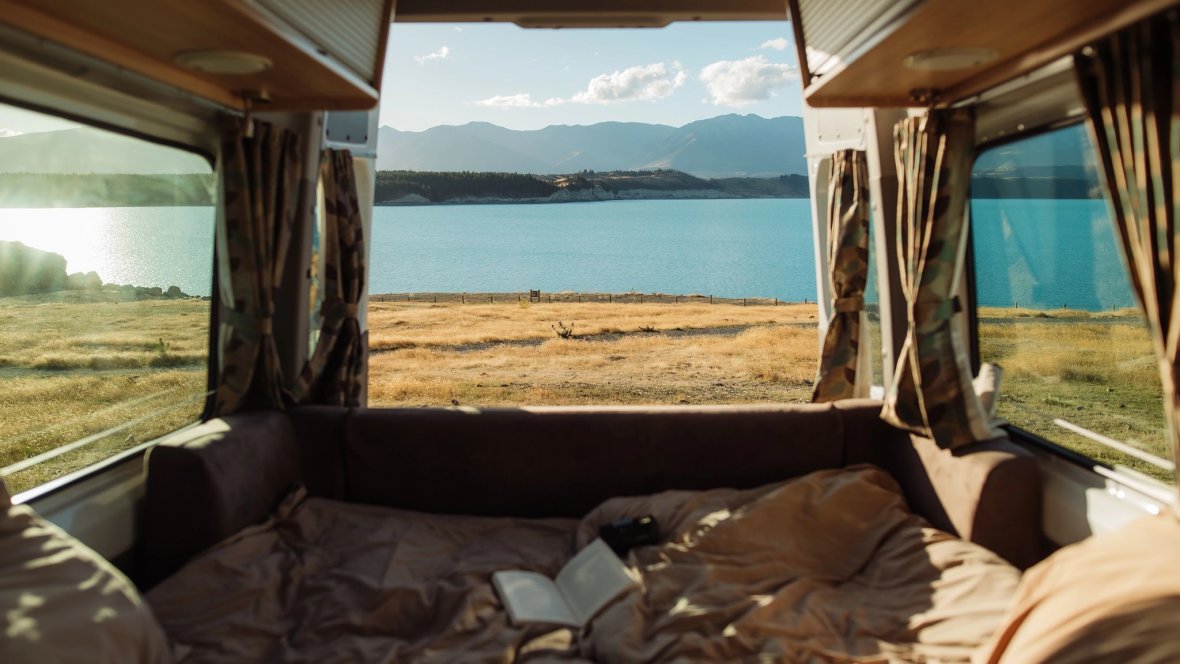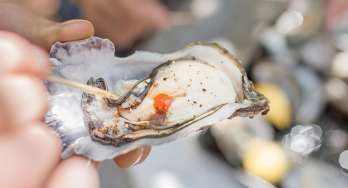How long should I spend at Lake Pukaki?
You can see the highlights of Pukaki Lake in 1–2 hours — enough time for photos, a short walk, or a picnic. For a more relaxed visit, plan to stay for half a day to explore different Lake Pukaki lookout points, take in the views, or catch a sunrise or sunset. Many travellers pair it with nearby Mount Cook National Park for a full-day itinerary.
Why is Lake Pukaki so blue?
Lake Pukaki gets its vivid turquoise colour from glacial flour — finely ground rock particles created by the movement of glaciers in the Southern Alps. These particles remain suspended in the water and reflect light in a unique way, giving the lake its iconic hue. This same effect is also seen in nearby lakes like Tekapo and Ohau.
How to get to Lake Pukaki
-
From Christchurch (~275 km / 3.5–4 hours): Take SH1 south, then SH79 toward Geraldine and Tekapo. Continue south on SH8 to reach the lake.
-
From Queenstown (~200 km / 2.5–3 hours): Drive north on SH6, then turn onto SH8 through Lindis Pass.
-
From Mount Cook Village (~45 km / 30 minutes): Follow SH80 (Mount Cook Road) directly south — Lake Pukaki lies at the junction with SH8.
There are several parking areas and scenic stops along SH8 and SH80, including access to Lake Pukaki viewpoint and freedom camping zones.

Best time to visit Lake Pukaki
Lake Pukaki is beautiful year-round, but the colour and conditions are at their best in warmer months.
-
Spring (September – November): Mild weather, clear skies, and blooming Lake Pukaki lupins along the shoreline.
-
Summer (December – February): Warmest and driest season — ideal for swimming, picnicking, and photography.
-
Autumn (March – May): Crisp air, fewer crowds, and golden light over the mountains.
-
Winter (June – August): Snow-capped peaks and icy blue water make for dramatic landscapes, though temperatures can be low.
Visit early in the morning or around sunset for the best lighting. These times offer calm conditions, fewer visitors, and excellent photo opportunities.
Weather at Lake Pukaki
The Lake Pukaki weather is typically cool and dry, with strong seasonal variation. Summers bring clear skies and temperatures around 20–25°C. Winters can drop below freezing, especially with its proximity to the Southern Alps. Regardless of the season, it’s best to dress in layers and be prepared for wind.
Can you swim in Lake Pukaki?
How deep is Lake Pukaki?
Lake Pukaki reaches depths of up to 70 metres. It’s the largest of three alpine lakes in the Mackenzie Basin and plays a key role in New Zealand’s hydroelectric power system, with Lake Pukaki level fluctuations sometimes visible depending on water use.
Best place to park your campervan at Lake Pukaki
The main parking area for campervans is at the Lake Pukaki Reserve, located just off SH8 near the intersection with SH80 (Mount Cook Road). It offers flat gravel spaces, stunning lake views, and basic toilets. The site is free for certified self-contained vehicles and is a popular overnight spot.
Campgrounds near Lake Pukaki
There are several campervan-friendly options near Lake Pukaki, ranging from freedom camping to full-service parks.
-
Lake Pukaki Reserve – The Pines – A scenic and sheltered freedom camping area on the southern edge of Lake Pukaki. Suitable for self-contained vehicles only, this site is set among a grove of pine trees with views across the lake to Aoraki/Mount Cook.
-
Glentanner Park Centre – Located 30 minutes north toward Mount Cook, this holiday park offers powered sites, kitchen amenities, and tour bookings — a great option for those heading into Aoraki/Mount Cook National Park.
-
Twizel Holiday Park – Around 15 minutes south of the lake, with powered sites, hot showers, and easy access to shops and supplies.
.jpg)


